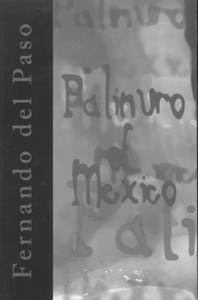Magical Mexican
In 'Palinuro of Mexico,' Fernando del Paso folds James Joyce into magical realism
By Harvey Pekar
MANY READERS will find Fernando del Paso's great novel Palinuro of Mexico--at long last available in an American edition nearly 20 years after its creation--daunting at first glance. Del Paso has been influenced by writers from Cervantes, Rabelais and Sterne to Joyce and Fuentes, and he employs sentences hundreds of words long and paragraphs that go on for pages.
Despite its formidable appearance, however, Palinuro of Mexico does not present overwhelming difficulties. Joyce's departure from conventional grammar, punctuation and syntax in Ulysses provides readers with more of a challenge. There certainly have been other precedents as well for Palinuro of Mexico aside from Ulysses and Finnegan's Wake--the most obvious touchstones--including works by Proust, Marguerite Young, Raymond Queneau, Georges Perec and Miguel Asturias.
Del Paso, a Mexican who's spent years abroad (Palinuro was first published in Spain in 1977), transcends the Latin American literary tradition in his masterwork, although much of Palinuro is set in his native land. The complex narrative follows the adventures through space and across time of a young medical student named Palinuro (derived from Palinurus, Aeneas' helmsman in classical literature) and his far-flung family and friends.
Unhampered by the conventions of ordinary storytelling, Palinuro appears in both the first and third person, partly because del Paso includes a good deal of autobiographical information and self-referential asides like "And into my novel had fallen the hyperbolic and hollow."
Indeed, del Paso once stated about Palinuro, "I realized I wasn't creating a number of characters but, in fact, one character with a number of facets or masks. In that multiplicity, I myself, as the novel's creator, was also included. ... This all-encompassing character can at times become Cousin Walter, who ends up being another aspect of Fernando del Paso. ... But this omnipresent character can also unfold into Molkas, Fabricio and Palinuro's other friends."
Most distinctively, del Paso fills Palinuro with frequent references to medicine and medical history, used primarily in metaphorical contexts. A medical student himself, del Paso once commented, "I began to understand that it [medicine] is nothing but a science of failure. It attempts to save a person's life and, although it succeeds at times, it is truly powerless in that it cannot explain the enigmas of the human body. Our body is a microcosm and is the only thing we truly enjoy in life: with the body we love and hate, with the body we enjoy and suffer." With this thought in mind, del Paso makes the sexual relationship of Palinuro and his first cousin, Estefania, a major part of the novel.
IN ADDITION to medical matters, del Paso detours into painting, literature and political history. One typically discursive chapter, for instance, contains an account of what happened to Ambrose Bierce after he wandered into Mexico and supposedly met Pancho Villa. (This was before Carlos Fuentes published The Old Gringo; Fuentes deliberately avoided reading Palinuro so that he would not be influenced by it.)
In this kind of nonlinear narrative, the order of the chapters means less than it does in most novels. One self-contained satirical episode echoing Gulliver's Travels is titled "Palinuro's Travels Among the Advertising Agencies and Other Imaginary Islands" (del Paso worked for a time as a publicist and employee of the BBC in London). Another chapter, taking the form of a theatrical script, focuses on the 1968 massacre of students in Mexico City.
The variety of subjects and styles in del Paso's work and his technical skill impress as much as his erudition. He loads Palinuro of Mexico with gorgeous prose poetry and displays a consistently sharp sense of humor. For readers hung up on "magic realism" (which, incidentally, existed in Europe as well as the Western hemisphere before the term was invented), the book also contains fantasy elements and hallucinatory passages. Now that you're aware of Palinuro of Mexico, don't let the book scare you. Seek it out; let it seep into you.
[ Metro | Metroactive Central | Archives ]
This page was designed and created by the Boulevards team.

Palinuro of Mexico by Fernando del Paso; translated by Elisabeth Plaister; Dalkey Archive Press; 557 pages; $14.95 cloth
From the November 27-December 4, 1996 issue of Metro
Copyright © 1996 Metro Publishing, Inc.
![[Metroactive Books]](/books/gifs/books468.gif)